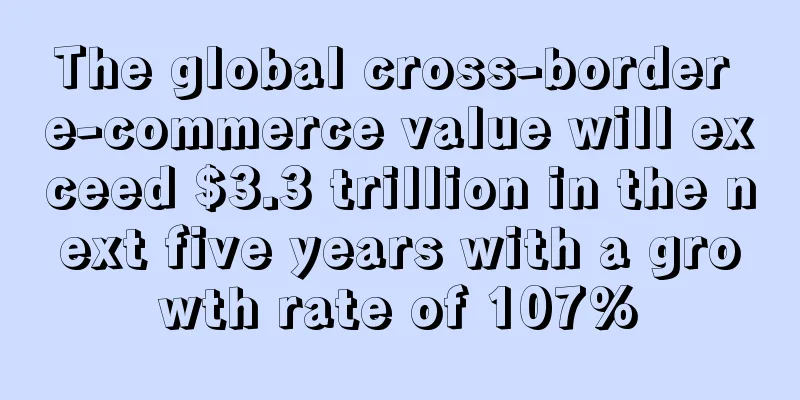The global cross-border e-commerce value will exceed $3.3 trillion in the next five years with a growth rate of 107%

|
According to a new study by Juniper Research, the value of global cross-border e-commerce is expected to be $2.1 trillion this year. This figure is expected to grow 107% over the next five years, exceeding $3.3 trillion by 2028, accounting for 33% of global e-commerce spending.
Researchers attribute this growth to rising disposable incomes in developing markets , which has prompted retailers and the entire e-commerce industry to turn to cross-border business. During this period, cross-border transactions in Brazil are expected to grow by 48%.
An interesting phenomenon is that alternative payment methods such as mobile payments are becoming increasingly popular in developing markets, which is prompting cross-border e-commerce to use these payment methods to meet consumer demand, otherwise there is a risk of losing market share to competitors.
Cross-border e-commerce is becoming a global trend. The growth of the e-commerce payment market mainly comes from the international field, thanks to the rapid expansion of major markets and their differentiation.
For example, Brazilian financial firm Nubank and payments company EBANX recently formed a partnership to optimize cross-border trade. Online platform JD.com offers users fast delivery times thanks to its strong logistics network, while AliExpress offers lower-priced products to make up for the longer delivery time.
The differences between Amazon, Rakuten and Mercado Livre lie in value-added services such as streaming and integrated financial services. Therefore, the researchers suggest that platforms must provide differentiated consumer experiences to succeed and add value to merchants.
The study also showed that cross-border e-commerce marketers should pay attention to social media. In an advertising market increasingly dominated by social media, large suppliers actually market directly to consumers.
Therefore, whether or not to attract digital consumers has become the strategic core of business competition. It is very important to correctly identify and learn the social media and digital advertising channels in each market, otherwise there is a risk of losing those consumers with rich purchasing experience.
Additionally, Nuvei’s research found that Brazil holds a 72% market share in cross-border e-commerce between Latin America and Europe, and Europe’s share of Latin American cross-border e-commerce is expected to reach $1 billion (2%) by the end of this year. Cross-border e-commerce market increase |
<<: I make 20,000 RMB a month from live streaming on TikTok
>>: Profits dropped to zero, Amazon sellers were forced to quit
Recommend
What is Ksher Payment? Ksher Payment Review, Features
Ksher Payment is a startup company that uses cross...
South Korean online shopping platform Queenit receives $43 million in funding
Online shopping platform Queenit recently receive...
10 new communities added on Een.com! Seller recruitment is here!
Are you still stuck in a low-price spiral with no...
What is FastBuy Middle East Supply Chain Company? FastBuy Middle East Supply Chain Company Review, Features
FastBuy Middle East Supply Chain Company was estab...
After one year of entrepreneurship, the company received nearly 10 million yuan in financing! Is Amazon service provider doing well again?
Recently, Workflow Labs, a Seattle-based startup ...
What is Greenway Cross-border Supply Chain? Greenway Cross-border Supply Chain Review, Features
Jiangsu Hongkun Supply Chain Management Co., Ltd. ...
Three of Guangzhou's top sellers were banned. Sellers: We want to clear our inventory and sell our products online
Amazon sellers are paying for past violations, an...
Pic Copilot, an AI tool for cross-border sellers, ranked second on the authoritative list, with the click-through rate of product images increasing by more than 7%.
Are you still only interested in ChatGPT? Cross-b...
UK Amazon workers to strike before Christmas
Hundreds of Amazon workers at their vast warehous...
What is Superb Minerals? Superb Minerals Review, Features
Superb Minerals, a company based in the United St...
Valuation reaches US$2.6 billion! French e-commerce platform ManoMano receives another US$355 million in financing
According to foreign media reports, French e-comm...
WishPost policy update, have sellers got it?
The order fulfillment service supports specific W...
What is Hipercard? Hipercard Review, Features
Hipercard is a Brazilian online payment platform ...
Don’t divert traffic from TikTok! Shenzhen billion-level brands sell well and reveal new product strategies
This year, many sellers are complaining that it i...
Walmart and Justice Partner to Help Support Back-to-School Shopping Season
On July 15, Walmart announced a partnership with ...









